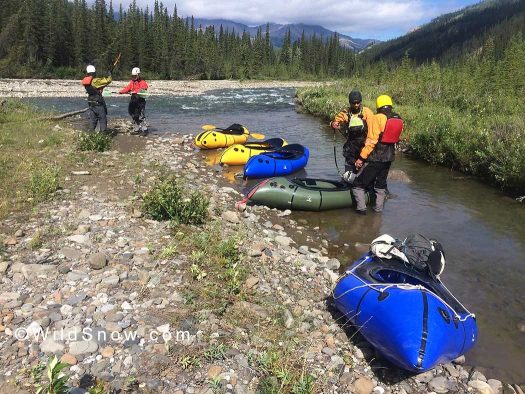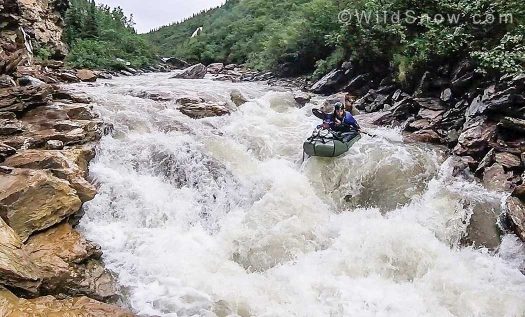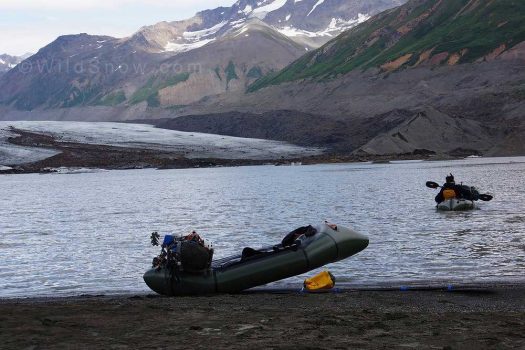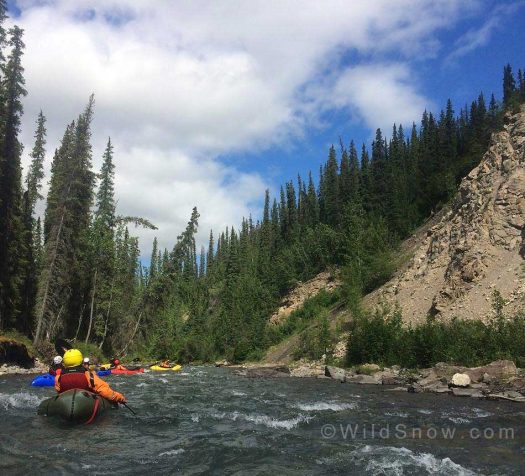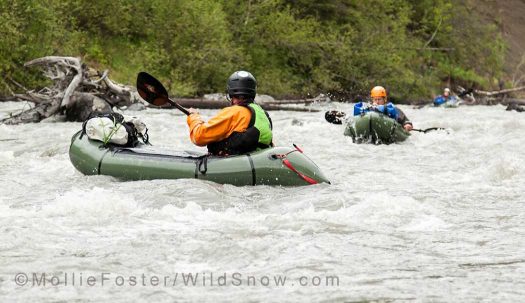
Walk down hill? No thanks! Pic by Mollie Foster
The storage wax is on, boots are dry, and the sun is shining. How on earth are we supposed to occupy our free time in such dire circumstances? What are we ski-tourers to do in the summer?
Skiing offers a way to see beautiful places and share in tons of fun with friends, while never having to walk downhill (which we all know really stinks). A few years back I was hiking down Riley Creek near the entrance to Denali National Park. All of a sudden three drysuit clad people rounded a bend in the river on what looked like pool toys. What were these strange little boats, I wondered?
Turns out these guys were onto something. Possible solution: packraft!
I know it’s a hipster thing to do these days in the outdoor community, right behind customizing your Aeropress and riding a fatbike. Still, I am a recent convert.
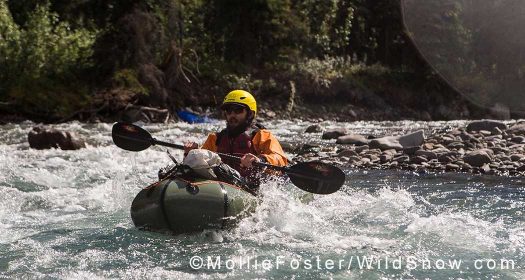
Float on. Pic by Mollie Foster
So what is ‘packrafting?’ If you have never seen one, a packraft is a small inflatable personal watercraft — think inflatable flat-bottomed kayak. They roll up small enough to fit in a medium sized backpack and only weigh a few pounds. Throw in a PFD (life jacket), helmet, paddle, dry suit, and spray skirt and you can forget about about walking downhill for about 12 pounds of extra weight. They handle surprisingly well and can also be loaded up with baggage if needed.
How is it like skiing?: Well, after the snow melts, all that water ends up in rivers. Turns out, you can still ride the melted snow in those rivers. Pack a raft, carry it uphill, inflate, ride down. See beautiful mountains on the way. Get cold. Make friends. Have fun. Sounds a lot like ski touring to me!!
I am a Pisces, but in truth have never really been into water sports. So, it took me a while to dive into the packrafting revolution. After my first chance encounter, I started tagging along with my good friend, Joe. Joe runs a small custom AK guiding outfit that takes people packrafting, so he has plenty of boats and experience to help out a newcomer like me, thanks Traverse Alaska!
After a few nearby creeks, Joe and I decided to test the expedition ability of such little boats. We loaded up with mountaineering gear and headed to the Eastern Alaska Range.
A jet boat helped us avoid a couple days of walking on the way in. We hauled everything up to the toe of a big glacier. Left the boats, went climbing for a few days, came back, inflated, and floated back to the car. Packrafts saved us a couple of days of walking on the way out, while adding a fun and challenging adventure into the mix.
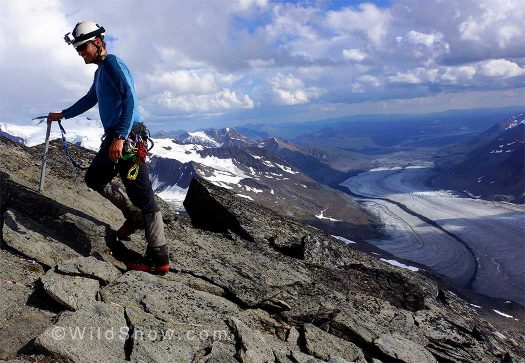
Not what I had thought of as a boat trip. You can see the river we floated back to the road down at the terminus of the glacier.
Safety Note: Packrafting can be dangerous! Small boats do not mean less hazard. Just because a boat
fits in a pack, doesn’t mean backcountry skills are a substitute for knowing water.
That trip also scared me. A heavily loaded boat in Class 3 whitewater was terrifying to a newbie. Packrafts are user friendly. It’s easy to get started with the sport — and by the same token, easy to make bad decisions. While I have dabbled with packrafts for a few years now, in an effort to learn how to do things without getting in over my head (literally and figuratively), this year I took a packraft specific safety/rescue class.
The course I took is a bit new in the whitewater world, but The Rescue Company put together a packraft slanted version of a traditional swiftwater rescue course. This felt super analogous to an AVY 1 course — highly recommended.
A bunch of rad Alaskans have been using packrafts for years to do some pretty extreme traverses in the mountains, i.e. Luc Mehl. Up here in AK packrafts seem pretty common these days, but the train has left the Alaska station and now plenty of friends in CO and Utah seem to have them too.
It’s a boat you can fit on a shelf. It opens up the door to multi-sport adventure days, and lets us skiers stay on H2O, albeit in its liquid form, all summer long.
So, if you are looking for your next off-season adventure, consider packrafting. Begin with a flat water float and find folks who know water and water safety. Soon, walking downhill will be optional.
Dr. Alex Lee lives in Anchorage, Alaska. Alex is a professor at Alaska Pacific University, teaching philosophy and environmental studies. He also works as a sometimes guide, naturalist, writer, and photographer.

